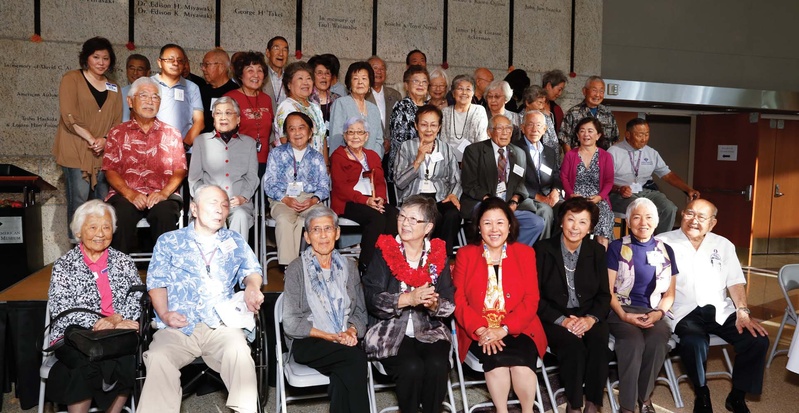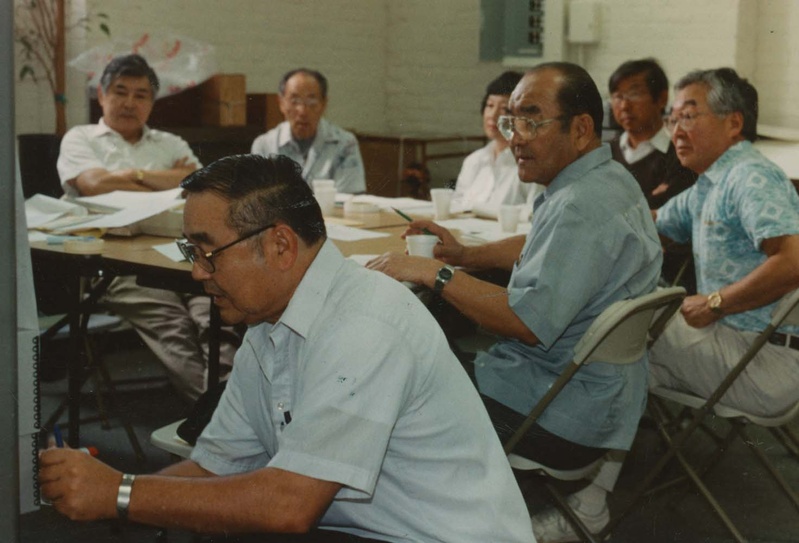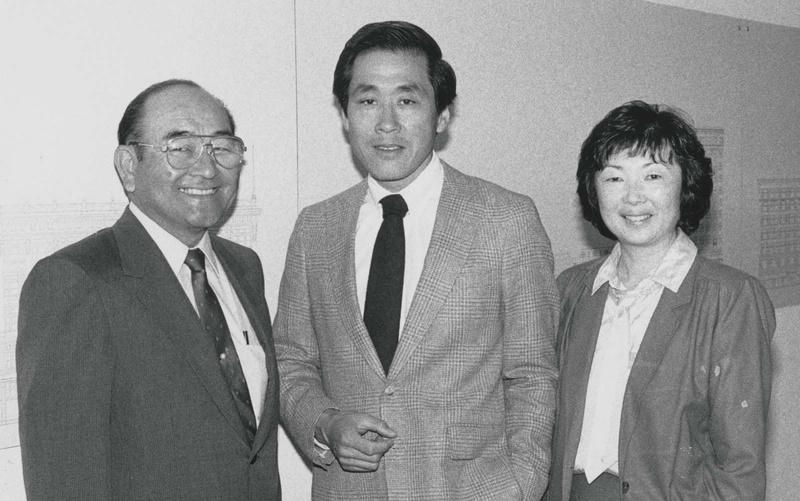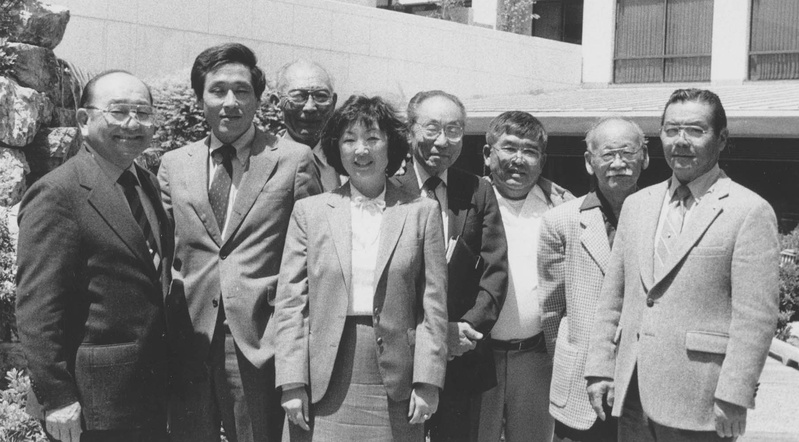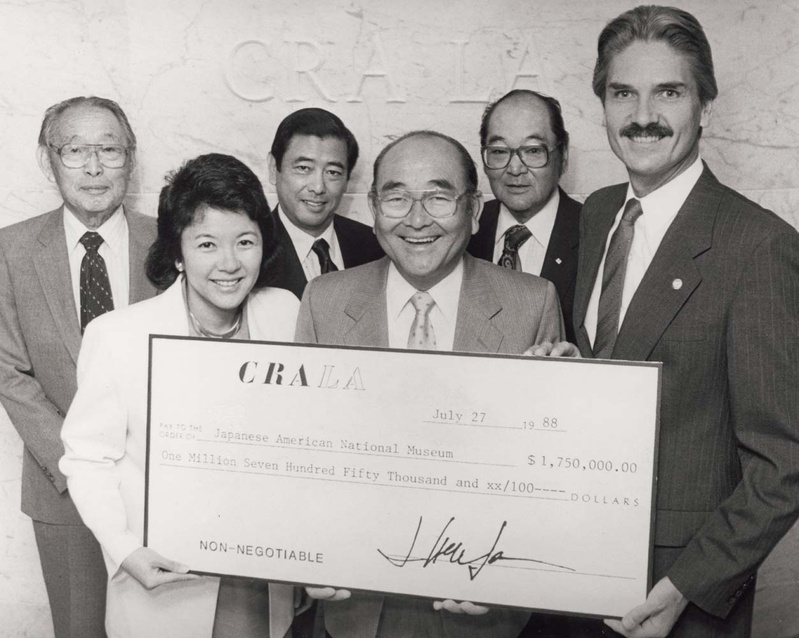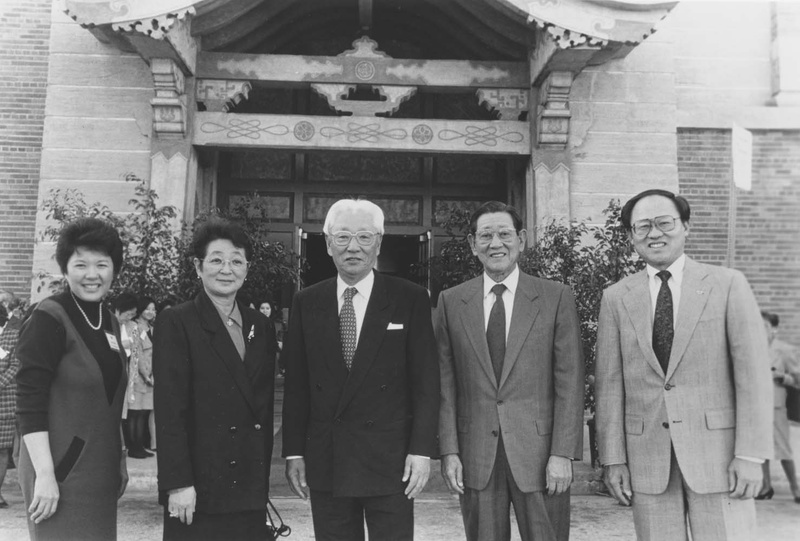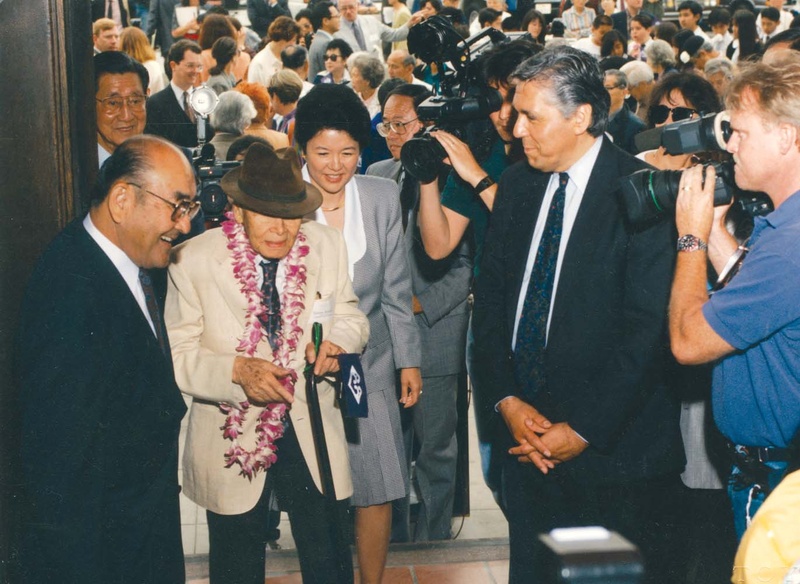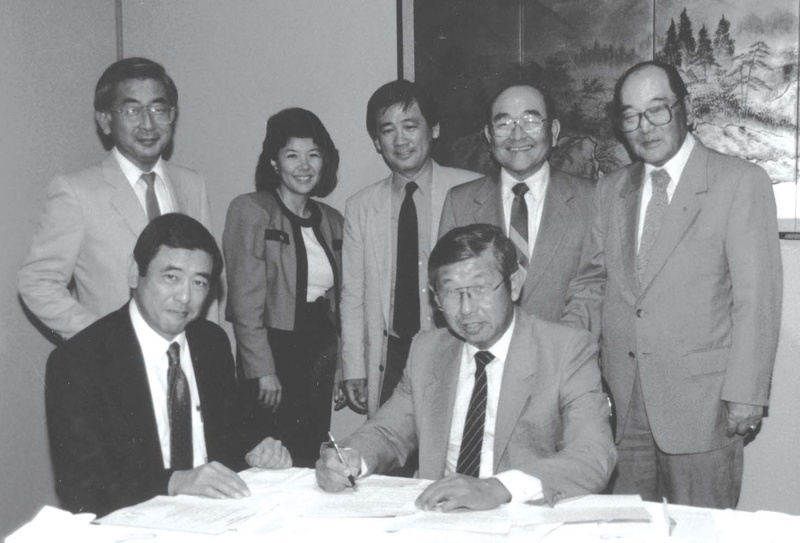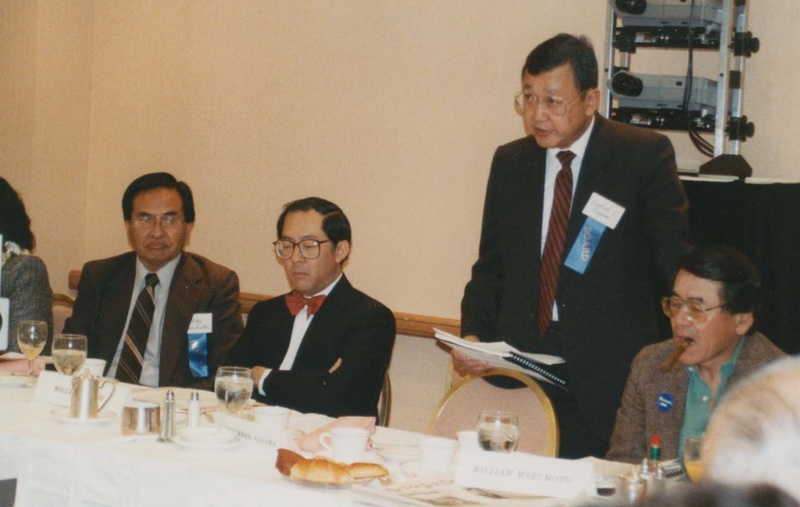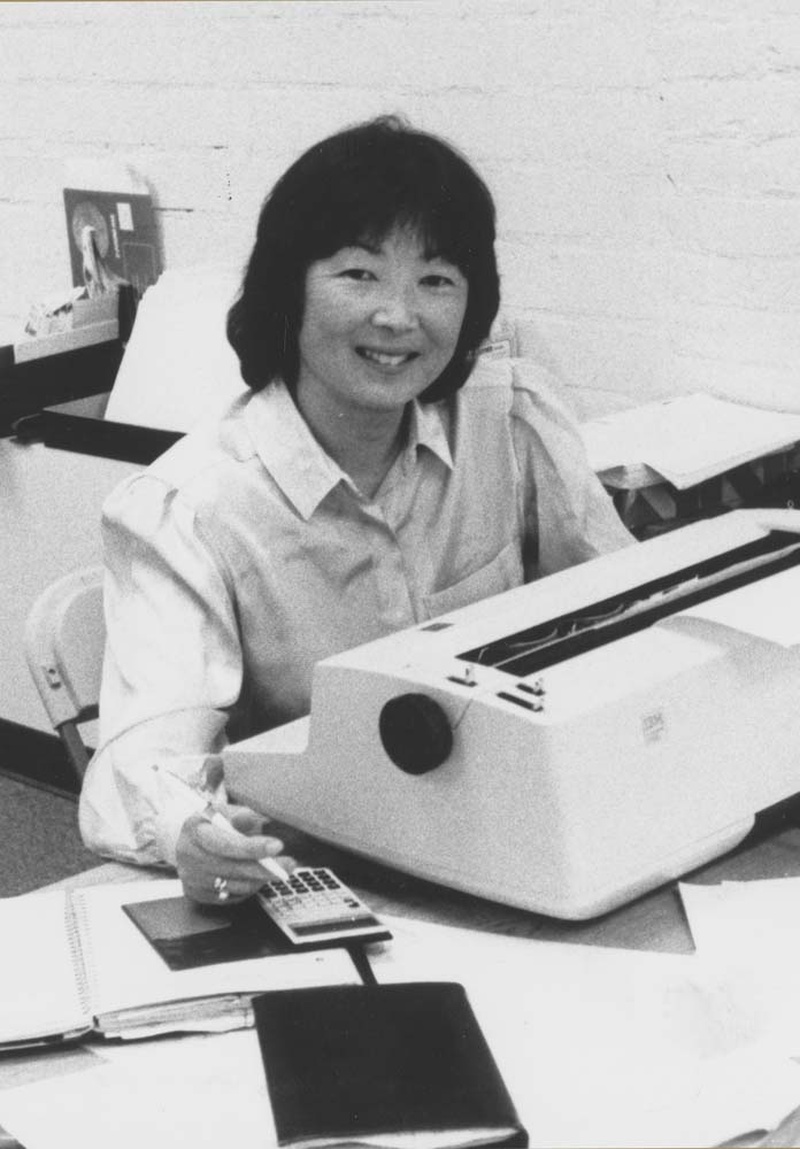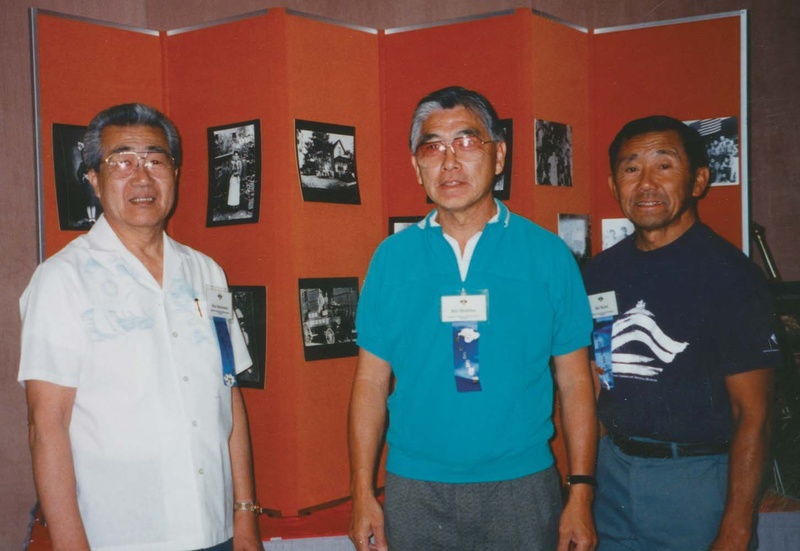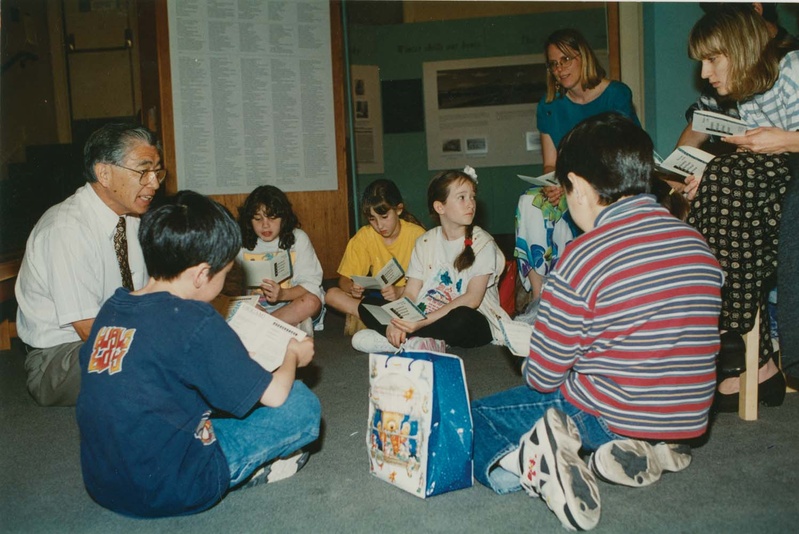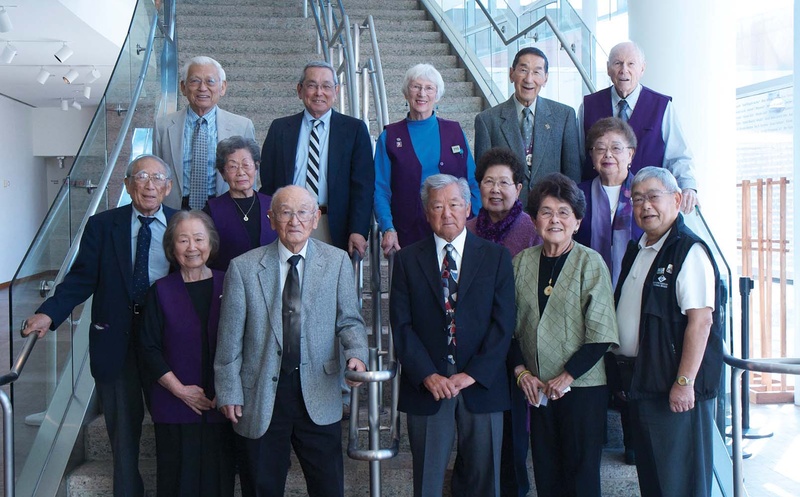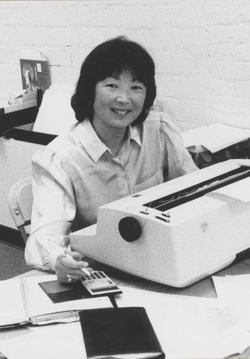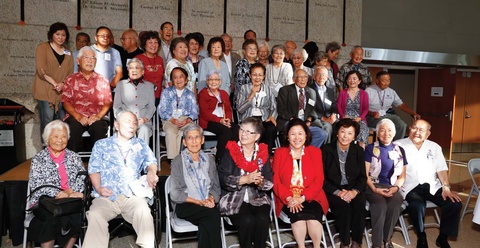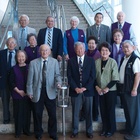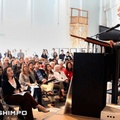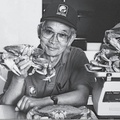In the beginning of most community organizations, there are volunteers. If one were to study American nonprofit entities, whether they’re devoted to history, culture, social services, or fighting disease, a common theme is that the enduring groups, big and small, are fueled and sustained by the incalculable contributions of their volunteers. Volunteers provide their skill, experience, leadership, time, money—and often all of the above—to a special mission or cause.
This booklet, envisioned and sponsored by Nitto Tire and translated, written and published by The Rafu Shimpo, is a collection of profiles of people who volunteer or have volunteered at the Japanese American National Museum (JANM). JANM is marking its 30th anniversary since its incorporation in 1985 and, as much as any institution, the Museum’s founding, culture, and success can be best understood through its current and former volunteers. Most of these individuals have humbly observed that they are not significant or remarkable. But JANM has looked to many of them for the most personal kind of contribution. It has asked them to share their life stories.
The mission of the Japanese American National Museum is to foster greater understanding and appreciation for America’s ethnic and cultural diversity by preserving and sharing the history of Americans of Japanese ancestry. Since its incorporation, JANM has grown into an internationally recognized institution featuring groundbreaking exhibitions, public programs, video documentaries, and curriculum, all based on the philosophy that there is no replacement for the first-person accounts of the people who lived through this history.
But when JANM was founded, many of those stories were unrecorded and undocumented. By the 1980s, the Issei immigrant generation who arrived from Japan at the turn of the 20th century had almost entirely passed and taken much of their history with them. In addition, the tumultuous Japanese American World War II experience, which included false charges of disloyalty and the unlawful forced removal and mass incarceration of thousands by their own government, remained largely unknown, even to the descendants of the families who endured it.
To better understand and appreciate the contributions of JANM’s volunteers, it is illuminating to review the origins of the institution. “Building an institution from the ground up requires significant hands-on involvement,” observes Irene Hirano Inouye, JANM’s inaugural executive director and president and CEO. “The National Museum’s volunteers were and continue to be a strong reason for the many accomplishments over the years.”
Nancy Araki, JANM’s first staff member, who went on to serve as director of community relations, explains that the founding of the Museum was the result of the merger of two groups, each seeking to create a Japanese American history museum. According to Araki, in the pre-incorporation era, the 100th Infantry Battalion/442nd Regimental Combat Team/Military Intelligence Service Museum Foundation, led by Col. Young Oak Kim and Y. Buddy Mamiya, engaged Visual Communications (the media arts group directed at the time by Araki and Linda Mabalot) to organize two photo exhibits on the story of the Japanese American World War II veterans. Meanwhile, MIS veteran and Merit Savings and Loan President Bruce T. Kaji and his Japanese American History Museum had concentrated more on developing and constructing a physical space for a museum in Little Tokyo.

“I came to know and work with Bruce’s volunteers like the architectural committee (which included seven architects from five different firms) along with a designer and administrative associate from Merit Savings,” Araki reveals. “The veterans’ group was into creating programs and Bruce’s group was focused on facility development. But both believed in the importance of preserving and presenting Japanese American history.”
After the official incorporation in 1985 with Araki as the lone staff member, JANM leased the abandoned former Nishi Hongwanji Buddhist Temple building from the City of Los Angeles through the efforts of H. Cooke Sunoo of the Community Redevelopment Agency and received a large grant from the State of California in 1986, thanks to State Senator Art Torres. After setting up offices in an old warehouse in what is now called the Arts District, JANM began integrating the first of hundreds of volunteers like Masako Koga into its organization.
JANM’s first curator Akemi Kikumura Yano (who succeeded Hirano Inouye as CEO in 2008) was brought on board in 1987 to oversee the nascent collection and to prepare the inaugural exhibition on the Issei. With limited space and resources, Kikumura Yano organized community meetings that brought together scholars like Lane Hirabayashi, Yuji Ichioka, and Robert Suzuki and community figures like Fred Hoshiyama, who contributed their expertise and time pro bono.
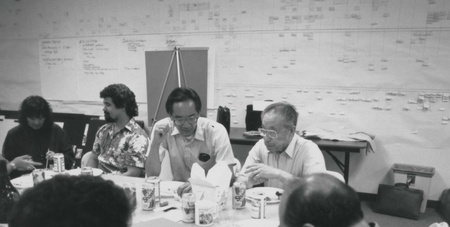
Volunteers helped to build the collection. For example, Hoshiyama connected Kikumura Yano to painter Henry Sugimoto. “I talked to Henry by phone (he was living in New York City),” Akemi explains, “and he gave me a verbal promise to donate his paintings pertaining to the immigrant experience to the Museum.” Several of the paintings from the Sugimoto Collection were featured not only in JANM’s inaugural exhibition, Issei Pioneers: Hawai`i and the Mainland, 1885-1924 (1992), but also later in The View from Within: Japanese American Art from the Internment Camps, 1942-1945 (1992), and subsequent shows.
Hirano Inouye, who was hired to be the executive director in 1988, recalls working directly with a volunteer leadership group who “enabled the Museum to develop a strong national and international reach. Board members and fundraisers such as Noby Yamakoshi from Chicago, Siegfred ‘Sig’ Kagawa from Hawaii, Francis Sogi from New York, and William ‘Mo’ Marumoto from Washington, D.C. were able to connect JANM with community and business leaders.” Thanks to Kagawa and George Aratani (founder of Mikasa), JANM enlisted the support of Akio Morita, Chairman of the Sony Corp. That relationship led to a fundraising pledge of almost $10 million by the Keidanren (Japan Federation of Economic Organizations), which enabled the construction of the Museum’s Pavilion in 1999.
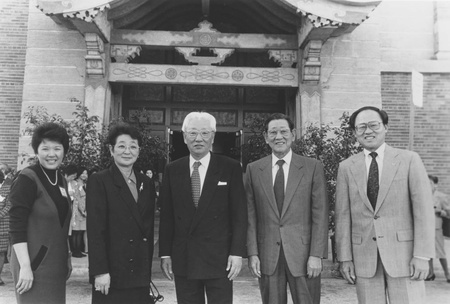
When JANM opened to the public in 1992, the role of the volunteers expanded. Hirano Inouye notes that the volunteers “worked in every part of the Museum, including collections, oral histories, exhibitions, the store, outreach, membership and fundraising. When the National Museum opened the doors of the Historic Building, the volunteers served as greeters and docents which helped make the visitor experience personal and welcoming.”
Former teachers Bill Shishima, Mas Matsumoto, and Hal Keimi were key to the establishment of JANM’s school tour program, “a hallmark of the Museum’s work.” In support of the thousands of students who have been guided through JANM by volunteer docents, the “Bid for Education” fundraiser, launched by another volunteer, the late U.S. Senator Daniel Inouye, has provided money for school buses, teacher training, and admission.
Both Kikumura Yano and Hirano Inouye laud the efforts of the volunteers in raising funds and creating regional exhibitions for the National Museum. Southern California volunteers were organized by Fred Hoshiyama and staff member Florence Ochi to raise over $1 million through a series of campaigns.
Kikumura Yano says that volunteers in regions like Hawaii, Oregon, Washington, and New York “contributed sizable financial resources. They not only helped to build our collection, but were actively involved in the recording, interpretation, and authentication of our history and culture from a first-person perspective.” Likewise, Hirano Inouye acknowledges the contributions of local volunteers in creating regional exhibitions like In This Great Land of Freedom: The Japanese Pioneers of Oregon and From Bento to Mixed Plate: Americans of Japanese Ancestry in Multicultural Hawai`i. Regional volunteers added “important diversities and untold stories to the Japanese American story.”
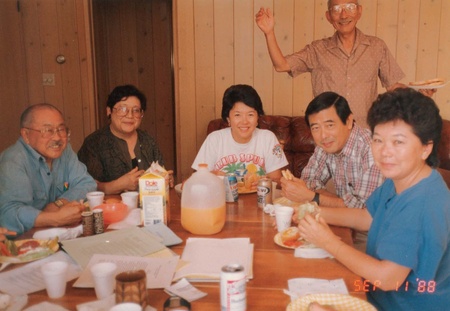
It is the fact that so many Japanese American National Museum volunteers have shared their personal stories that makes them unique. This booklet contains bilingual profiles of the volunteers of JANM, which recount stories about their families and their personal lives. While the interviews provide insight into the lives of the volunteers, they are not oral histories filled with scholarly details, but brief glimpses into the personal stories of a remarkable group of people. Most of the interviews were conducted by The Japanese Daily Sun, and all were written, translated, and edited by The Rafu Shimpo.
The list of the volunteers whose stories are included in this booklet covers the lengthy existence of the Japanese American National Museum. From the earliest volunteers like Masako Koga (now Murakami), Teri Tanimura, and Bob Uragami to the more recent and much younger Ryan Taketomo and Kyle Honma, this sampling represents the different eras of JANM. There are three married couples (the Murakamis, the Yamashitas, and the Yasudas), a handful in their 90s, two non-Asians (Nahan Gluck and Kathryn Madara), two best friends (Janet Maloney and Irene Nakagawa), and several Japanese-speaking volunteers. One individual, Ken Hamamura, has the distinction of fulfilling roles as a staff member, volunteer, and board member.
Their family stories span the breadth of Japanese American history. Not surprisingly, many of the volunteers have invested their time and effort to learn about and document their own family histories. While there is often a common thread through many of the interviews, their profiles represent a remarkable geographic, generational and cultural diversity. Some families arrived in the 19th century and some within the last few decades. Several individuals were born in America, but educated in Japan. While the summaries are not long, they attempt to capture the essence of the personalities and feelings of the individual volunteers and their relationship to their Nikkei heritage.
Hirano Inouye sums up her feelings about the volunteers of the Japanese American National Museum by remarking, “Their greatest contribution has been to bring to life the core Japanese American story, which is the heart of the Museum’s work. Through sharing their stories, their expertise, and their time, they have made the Japanese American National Museum a unique and meaningful institution.”
* This story was written by Chris Komai for Voices of the Volunteers: Building Blocks of the Japanese American National Museum, a book presented by Nitto Tire and published by The Rafu Shimpo. All photos courtesy of the Japanese American National Museum.
Presented by
© 2015 The Rafu Shimpo


